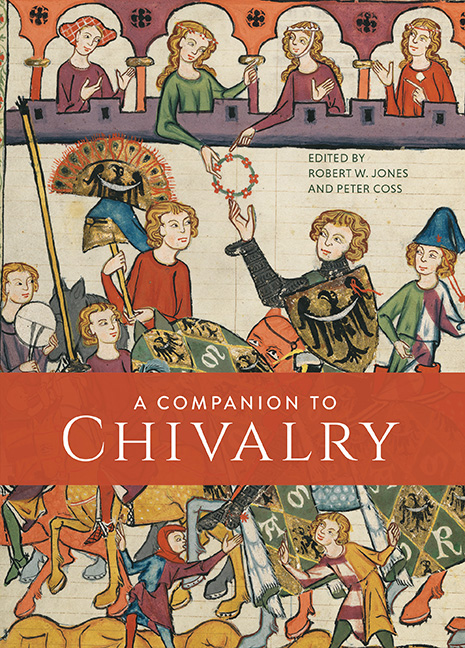Book contents
- Frontmatter
- Contents
- List of Illustrations
- List of Contributors
- Introduction
- 1 The Origins and Diffusion of Chivalry
- 2 The Organisation of Chivalric Society
- 3 The Secular Orders: Chivalry in the Service of the State
- 4 The Military Orders
- 5 Marshalling the Chivalric Elite for War
- 6 Chivalric Violence
- 7 Chivalry in the Tournament and Pas d'Armes
- 8 Heraldry and Heralds
- 9 Arms and Armour
- 10 Constructing Chivalric Landscapes: Aristocratic Spaces Between Image and Reality
- 11 Gendered Chivalry
- 12 Chivalric Literature
- 13 Manuals of Warfare and Chivalry
- 14 The End of Chivalry? Survivals and Revivals of the Tudor Age
- 15 Chivalric Medievalism
- Select Bibliography
- Acknowledgements
- Index
5 - Marshalling the Chivalric Elite for War
Published online by Cambridge University Press: 24 October 2019
- Frontmatter
- Contents
- List of Illustrations
- List of Contributors
- Introduction
- 1 The Origins and Diffusion of Chivalry
- 2 The Organisation of Chivalric Society
- 3 The Secular Orders: Chivalry in the Service of the State
- 4 The Military Orders
- 5 Marshalling the Chivalric Elite for War
- 6 Chivalric Violence
- 7 Chivalry in the Tournament and Pas d'Armes
- 8 Heraldry and Heralds
- 9 Arms and Armour
- 10 Constructing Chivalric Landscapes: Aristocratic Spaces Between Image and Reality
- 11 Gendered Chivalry
- 12 Chivalric Literature
- 13 Manuals of Warfare and Chivalry
- 14 The End of Chivalry? Survivals and Revivals of the Tudor Age
- 15 Chivalric Medievalism
- Select Bibliography
- Acknowledgements
- Index
Summary
In contrast to the political and socio–cultural organisation of the chivalric elite, we know surprisingly little about how they organised themselves on the battlefield. Our sources provide very little insight. Indeed, if we were to believe the majority of our narrative sources then we might conclude that there was no organisation at all, and that knights fought as individual warriors. Certainly that is the picture painted in the epic and the romance. The heroes fight alone, against huge odds or in one–on–one encounters that seem more like tournament bouts than all–out war. Biographers and chroniclers have a similar approach, providing a broad–brush narrative of military actions, then focusing right down to the acts of individual figures. Simply put, the writers were not interested in the minutiae of military organisation any more than their audiences, for whom much of it would have been self–evident, their being part of the military elite. Moreover, the importance of the chivalric virtue of prouesse, with its focus on individual martial ability, pushed the writer and audience down the same line.
For much the same reason, the writings on chivalry – the treatises of the likes of Geoffrey de Charny, Honoré Bonet or Christine de Pizan – have little to say on the subject either. The individual warrior's worth, prowess and honour were their subject. Christine de Pizan, drawing heavily on the late Roman writer Vegetius, wrote about the virtues and skills of the commander, and of the strategy necessary in war (the importance of lines of supply, the need to retain the strategic initiative and the like), but has little use for Vegetius's extensive and detailed passages on the structure of armies and the units within them.
Historians of the fourteenth and fifteenth centuries will argue that whilst the narrative sources may be all but silent on the topic, the administrative records survive in numbers sufficient to develop a very strong understanding of how a medieval army functioned. From 1337 English royal armies, both field armies and garrison forces, were raised entirely by the use of contracts. These forces, paid by the crown, generated an enormous quantity of bureaucratic paperwork, from the initial indenture through regular muster rolls and restauro equorum valuations of horses for compensation purposes, to pardons and protections taken out at the onset of campaigns to try to protect the assets of those going to war.
- Type
- Chapter
- Information
- A Companion to Chivalry , pp. 85 - 98Publisher: Boydell & BrewerPrint publication year: 2019



